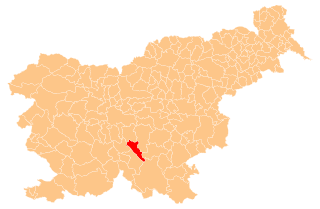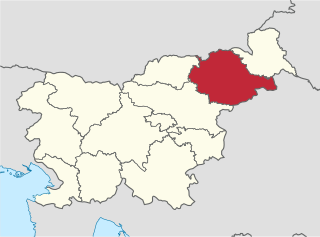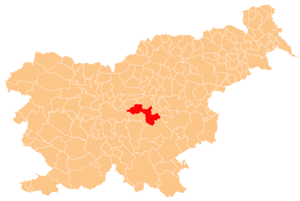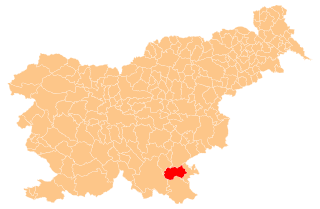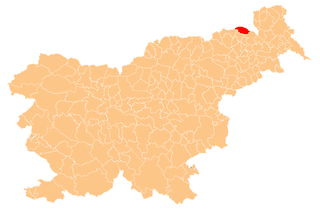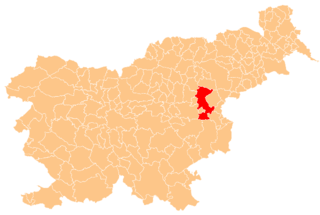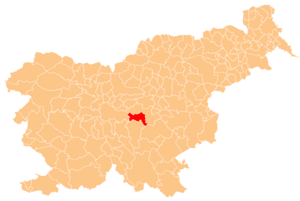| Skorba | |
|---|---|
| Coordinates: 46°25′10.73″N15°49′59.29″E / 46.4196472°N 15.8331361°E Coordinates: 46°25′10.73″N15°49′59.29″E / 46.4196472°N 15.8331361°E | |
| Country | |
| Traditional region | Styria |
| Statistical region | Drava |
| Municipality | Hajdina |
| Area | |
| • Total | 2.46 km2 (0.95 sq mi) |
| Elevation | 229.3 m (752.3 ft) |
| Population (2002) | |
| • Total | 372 |
| [1] | |
Skorba (pronounced [ˈskɔːɾba] ) is a village in the Municipality of Hajdina in northeastern Slovenia. The area is part of the traditional region of Styria. It is now included with the rest of the municipality in the Drava Statistical Region. [2]

A village is a clustered human settlement or community, larger than a hamlet but smaller than a town, with a population ranging from a few hundred to a few thousand. Though villages are often located in rural areas, the term urban village is also applied to certain urban neighborhoods. Villages are normally permanent, with fixed dwellings; however, transient villages can occur. Further, the dwellings of a village are fairly close to one another, not scattered broadly over the landscape, as a dispersed settlement.
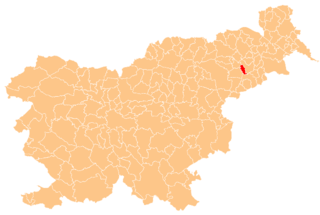
The Municipality of Hajdina is a small municipality on the right bank of the Drava River near Ptuj in northeastern Slovenia. Its administrative centre is the village of Zgornja Hajdina. Traditionally the area was part of the Styria region. The municipality is now included in the Drava Statistical Region. Sights include relics of the Roman settlement of Poetovio and the parish church of Saint Martin in Zgornja Hajdina.

Slovenia, officially the Republic of Slovenia, is a sovereign state located in southern Central Europe at a crossroads of important European cultural and trade routes. It is bordered by Italy to the west, Austria to the north, Hungary to the northeast, Croatia to the southeast, and the Adriatic Sea to the southwest. It covers 20,273 square kilometers (7,827 sq mi) and has a population of 2.07 million. One of the successor states of the former Yugoslavia, Slovenia is a parliamentary republic and a member of the United Nations, of the European Union, and of NATO. The capital and largest city is Ljubljana.
A number of archaeological finds close to the settlement, including a villa rustica , are associated with the nearby Roman town of Poetovio. [3]

An archaeological site is a place in which evidence of past activity is preserved, and which has been, or may be, investigated using the discipline of archaeology and represents a part of the archaeological record. Sites may range from those with few or no remains visible above ground, to buildings and other structures still in use.

Villa rustica was the term used by the ancient Romans to denote a villa set in the open countryside, often as the hub of a large agricultural estate (latifundium). The adjective rusticum was used to distinguish it from an urban or resort villa. The villa rustica would thus serve both as a residence of the landowner and his family and also as a farm management centre. It would often comprise separate buildings to accommodate farm labourers and sheds and barns for animals and crops. In modern British archaeology, a villa rustica is commonly referred to simply as a "Roman villa".

In historiography, ancient Rome is Roman civilization from the founding of the city of Rome in the 8th century BC to the collapse of the Western Roman Empire in the 5th century AD, encompassing the Roman Kingdom, Roman Republic and Roman Empire until the fall of the western empire. The civilization began as an Italic settlement in the Italian peninsula, dating from the 8th century BC, that grew into the city of Rome and which subsequently gave its name to the empire over which it ruled and to the widespread civilisation the empire developed. The Roman empire expanded to become one of the largest empires in the ancient world, though still ruled from the city, with an estimated 50 to 90 million inhabitants and covering 5.0 million square kilometres at its height in AD 117.

